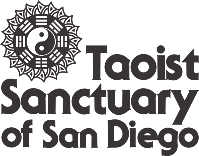Energetics of Hand Techniques
Tuina is the Chinese method of bodywork or therapeutic massage. It focuses upon the use of a variety of hand techniques to relieve pain, harmonize the flow of qi and blood through the body and restore functional anatomy. Tuina is considered a part of Traditional Chinese Medicine in the same way as acupuncture, qi gong and herbology.
The hand techniques utilize a variety of principles in their application to specific disorders. They can be divided into several categories of therapeutic effect. These categories include oscillating methods, pressure methods, passive joint movement, pinching or plucking methods and qi emitting methods.
Oscillating methods rely on the development of a kinesthetic wave pattern through repetitive movement. This movement generates a rhythmic wave pattern that penetrates deeply into the body and activates the circulation of qi and blood. This wave also effects the nervous system. Pressure is a secondary aspect of this principle.
Pressure techniques rely on the use of force to develop either a static pressure, an alternating pressure and release or a moving pressure. These techniques are used to facilitate the removal of obstruction, relieve qi and blood stagnation and harmonize the flow of qi and blood.
Passive joint movement features the use of range of motion to help restore functional anatomy and re-educate the nervous system. It also helps relieve qi and blood stagnation.
Pinching or plucking techniques are applied to the skin, tendons or muscles. These techniques feature pulling and lifting either quickly or moderately to effect the tonus of the skin, tendons or muscles or to increase range of motion of joints.
Qi emitting methods utilize light to moderate pressure on acupoints and the concentration and extension of qi through the palm or fingers of the practitioner. This can be combined with specific breathing patterns and pressure combinations. The intention is to activate the flow of qi through a specific acupoint of channel. The direction of qi movement can also be affected by either pushing or pulling with the qi.
The ability to emit or extend qi is developed by the regular practice of qi gong exercises. The practitioner activates the circulation of qi in his or her body and learns breathing patterns that help to focus the qi in different parts of the body. By focusing attention in these areas, the practitioner develops sensitivity to the specific vibratory patterns of the qi.
As skill and power develop, the practitioner can begin to use qi extension in a wide variety of hand techniques. The easiest ones are the pressure methods of pushing, pressing, penetrating and grasping. These techniques are generally slower in movement and easier to combine with qi extension. More difficult are the passive joint movement and plucking – pinching methods. The increased variety of movement and tempo are sometimes difficult to combine with qi extension. Oscillating methods are the hardest to combine with qi extension due to the rate of movement and the position of the hand. Generally it is much easier to emit qi through the hands when the wrists and fingers and relaxed, extended and still.
The goals of the hand techniques are to disperse, tonify, activate, harmonize and warm the qi and blood. These goals are achieved by varying the rate, pressure and duration of a Tuina treatment. The combination of qi extension with the specific hand techniques produces a more pronounced effect. It is the development of the practitioner’s ability to control his or her body, breath and hands that separates the novice from the master. While they will often appear similar in execution, the master’s techniques will be profoundly more effective due to the control and development of the body, breath and hands. This is a process that is accomplished through determination, practice, endurance and insight.
